Raja Ampat, the 'Amazon of the Seas', takes the top spot on many divers' bucket lists. And for good reason. Nestled in the middle of the Coral Triangle, Raja Ampat is a name shrouded in diving legend thanks to its rich biodiversity. With enough incredible marine life to keep you coming back for more, it's no wonder that divers travel staggering distances to reach this remote location. So without further ado, let's dive into some of the top facts about Raja Ampat...
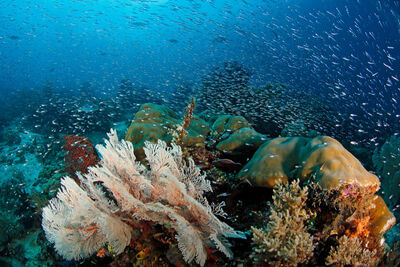
1. Raja Ampat is nestled in the heart of the Coral Triangle
First things first: let's find Raja Ampat on the map. This vast archipelago is located in Indonesia, just off the northwest tip of New Guinea, in West Papua. Here, Raja Ampat's 1,500 jungle-covered islands, cays and shoals are scattered across over 15,400 square miles in the heart of the Coral Triangle. It's remote, so you'll have to hop on a few flights to reach the region - but it's well worth the journey (we promise). After many hours of travel, you'll be rewarded with a biodiverse heaven beyond your wildest dreams. We're talking hidden lagoons, untouched white-sand beaches and pristine marine environments.
2. There's a legend behind the name 'Raja Ampat'
Keen to learn a fantastic fact about Raja Ampat? Its name originates from a legend. Raja Ampat means "Four Kings" in Indonesian, and according to local mythology, a woman once discovered seven magical eggs. Four of these hatched into kings who each ruled one of the four largest islands: Waigeo, Misool, Baganda, and Salawati. The other three eggs turned into a girl, a ghost and a stone.
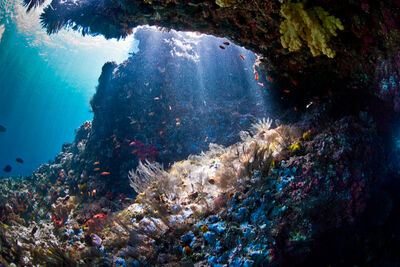
3. There are only 50,000 people living across this archipelago
If you're looking for some nature-infused solitude, Raja Ampat delivers. Despite its size, the archipelago has a small population of only around 50,000, spread across its many islands. The largest concentration is found in Kota Wasisai, where a grand total of 8,500 people live.
4. Over ten indigenous languages are spoken in Raja Ampat
Raja Ampat has been inhabited for tens of thousands of years. Scientists estimate that the first settlers arrived between 30,000 and 60,000 years ago, most likely Austronesian and Melanesian peoples. Due to the dispersion of communities and the relative isolation of each one, more than ten languages are currently spoken across the various islands, not including the many dialects that differ from island to island. Considering the previous fact about Raja Ampat's small population size, it's no wonder that many of these languages are considered endangered.
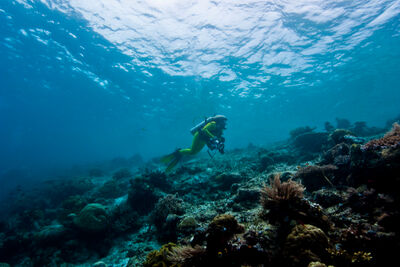
5. Raja Ampat first became popular with tourists in the 1990s
Although the region has been home to local communities for millennia, Raja Ampat only appeared on the diving community's radar in the 1990s. This was thanks to an explorer and diver, Max Ammer, who came to the area searching for WWII shipwrecks. Stunned by the underwater biodiversity, he invited marine biologists and conservationists to come and explore. And so began the process of putting Raja Ampat on every diver's bucket list.
6. Raja Ampat is home to over 1,500 fish species
There's a reason why Raja Ampat is loved by divers (and marine lovers in general): its biodiversity is unmatched. Often dubbed the 'Species Factory', it's home to more than 1,500 species of fish, making it one of the most biologically diverse places on earth. This is best exemplified at Cape Kir, an iconic dive site located on the northeastern end of Kri Island. Here, Dr. Gerry Allen recorded an incredible 374 marine species on a single dive. Let that sink in…
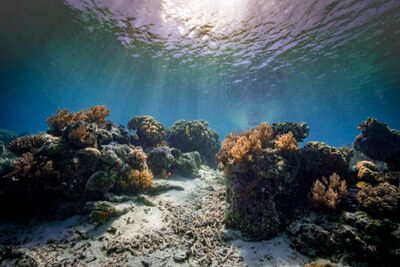
7. From megafauna to macrofauna
Let's dive a little deeper into the types of marine marvels you can find in these waters. In the shallows and around the corals, you'll find electric-coloured nudibranchs, elusive pygmy seahorses, camouflaged frogfish and the rainbow-shelled mantis shrimp. Head a little deeper to spy sleeping wobbegong sharks, manta rays and sea turtles. For something even bigger, head to Cenderwasih Bay National Park, where whale sharks feed in protected waters.
8. Raja Ampat hosts 75% of the coral species found in the world
This region isn't only rich in fish - it's a kaleidoscopic coral paradise. One of the most well-known facts about Raja Ampat is that despite covering less than 1% of the planet, it's home to 75% of all coral species, totalling an incredible 537.
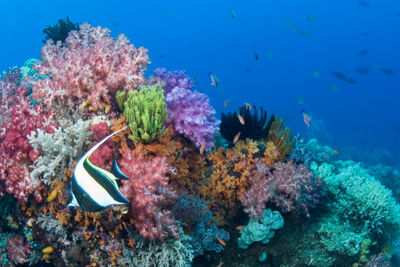
9. Raja Ampat has bath-warm waters
Now that we've listed some of our favourite facts about Raja Ampat, we'll tell you what to expect in terms of diving conditions. The best time to dive Raja Ampat is during the dry season, which runs from October to April. The waters here are warm year-round with temperatures hovering between 28°C and 30°C, so a shortie or a 3mm wetsuit will do. Visibility can reach up to 20m, so be sure to have your dive camera charged and ready to shoot.
10. Raja Ampat has some of the best South Sea Pearls
For land lubbers or for those dive break days, there's plenty to be enjoyed on land in Raja Ampat. Aside from a full dive log and camera roll, you may want to leave with a little memento. Why not visit Alyu Bay to learn about pearl cultivation at the Atlas South Sea Pearl Farm? Or if local handicrafts are up your street, spend some time at one of the local villages, such as Arborek, where you can watch locals create traditional handicrafts from pandanus leaves. And if trekking tickles your fancy, head up one of the islands' jungle-cloaked hills for panoramic views that make the steep climb a minor price to pay.
















